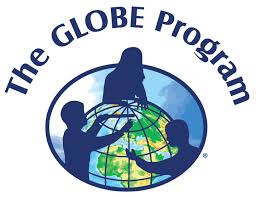GLOBE Connections
GLOBE Pedosphere (Geosphere) Overview

GLOBE stands for Global Learning and Observations to Benefit the Environment. It is a program sponsored by the U.S. National Aeronautics and Space Administration (NASA) with support from the National Science Foundation (NSF), National Oceanic and Atmospheric Administration (NOAA) and Department of State. GLOBE connects students, teachers, scientists, and citizens from different parts of the world (over 120 countries) to conduct real, hands-on science about their local environment and to put this in a global perspective.
My NASA Data and the GLOBE program complement each other well. My NASA Data provides educational resources and data which support student exploration of NGSS aligned Earth science phenomena. GLOBE provides opportunities for students to collect their own data related to these phenomena using protocols. A protocol is a standard procedures for collecting and entering data. Each protocol also has supporting grade level-appropriate interdisciplinary learning activities. These protocols and activities have been developed by the scientific community and validated by teachers.
GLOBE resources are organized by protocol rather than phenomena. Therefore My NASA Data provides GLOBE Connections which pull together GLOBE resources by sphere and phenomena. Connecting in this way facilitates exploration of phenomena in a variety of ways and includes components to make it locally relevant for students.
GLOBE pedosphere (geosphere) protocols and learning activities can provide hands-on opportunities for students to explore My NASA Data phenomena from various spheres, not just the pedosphere (geosphere).
Data collection of soil temperature, moisture and chemical properties is invaluable to scientists in many fields: soil scientists use the data to better understand their potential for plant growth; hydrologists use the data to determine potential sedimentation in water bodies; Meteorologists and climatologists use soil data in weather and climate prediction models as soils can affect humidity and air temperature; biologists use soil data to understand its potential for supporting plant and animal life; and anthropologists study the soil in order to reconstruct the human history of an area. Soil temperature and moisture protocols involve repeated measurement of rapidly changing environmental variable. Soil characterization measurements offer in depth observation of generally long-lasting properties of the soil column. Frost tube observations give important climate information about frozen soils.(Source: GLOBE Website)
GLOBE Pedosphere (Geosphere) Protocol connections are available through My NASA Data.
Learning activities are developed and tested by teachers and scientists. They provide interactive opportunities to explore the concepts related to the protocols. Each My NASA Data Phenomenon has been aligned with various GLOBE protocols and learning activities. They can be found in the GLOBE connections section of My NASA Data for each sphere.
There are mechanisms for students to participate in data collection campaigns, submit research reports and participate in the International Virtual Science Symposium and Student Research Symposia.

